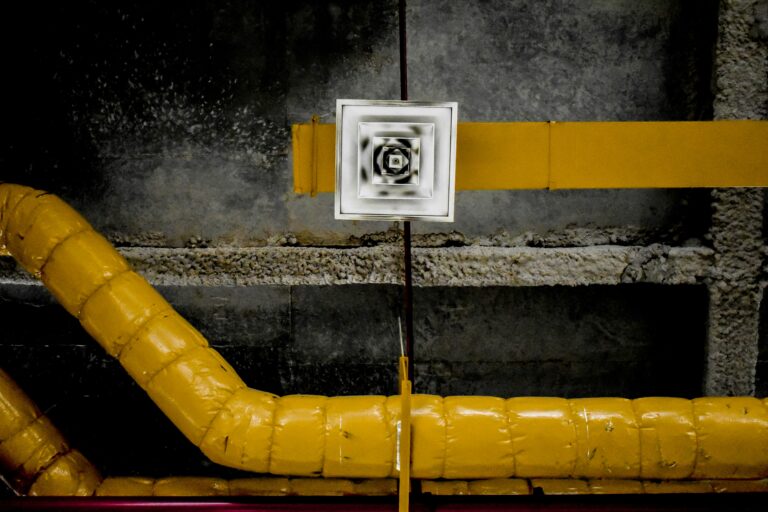
When thinking about energy efficiency in your home’s heating and cooling, the focus naturally falls on the HVAC unit itself. However, an often overlooked but critical component of your system is the ductwork — the network of channels that delivers conditioned air throughout your home. The design, installation, and maintenance of your duct system have a hidden but powerful impact on how efficiently your HVAC operates, how comfortable your home feels, and how much you pay on energy bills.
At Air Mavericks, serving Largo, FL, and the surrounding counties, we understand that optimizing your duct design can lead to significant energy savings and increased system longevity. This article explores the many ways duct design influences energy efficiency and what homeowners can do to maximize their HVAC investment.
Why Duct Design Matters for Energy Efficiency
Ducts are the arteries of your heating and cooling system, carrying cooled or heated air from the HVAC unit to every room. If this airflow is compromised, the whole system suffers. Proper duct design considers size, layout, insulation, and sealing to reduce energy waste and improve comfort.
Poorly Designed Ducts Waste Energy
When ducts are too small, have too many bends, or are poorly sealed, air leaks out or resistance increases, forcing your HVAC system to work harder. Studies show that duct leakage and poor design can lead to 20-30% energy loss in home heating and cooling. This waste not only inflates energy bills but accelerates wear and shortens system lifespan.
Ideal Duct Sizing Ensures Efficient Airflow
If ducts are undersized, airflow becomes restricted, increasing static pressure in the system and causing uneven temperature distribution. Oversized ducts, however, reduce air velocity, leading to weak airflow and inefficient heating or cooling. Balanced sizing matched to your home and HVAC capacity is crucial.
Layout and Pathway Impact Efficiency
Long duct runs with multiple bends increase the “effective length” that air must travel, raising resistance. Smooth, straight pathways minimize this resistance, allowing air to flow easily and reducing energy use by the blower motor.
Insulation and Sealing Prevent Thermal Loss
Ducts running through unconditioned spaces — like attics or crawl spaces — that aren’t insulated properly lose heat in winter and gain heat in summer. Insulation along with airtight sealing prevents this undesirable heat exchange, allowing conditioned air to reach your rooms at the right temperature.
Other Benefits of Proper Duct Design
Besides energy savings, good duct design brings several other important advantages:
-
Improved Comfort: Even temperature distribution means no hot or cold spots around your home, providing consistent comfort year-round.
-
Longer HVAC System Life: Reduced strain on your HVAC unit decreases the likelihood of breakdowns and extends its operational life.
-
Better Indoor Air Quality: Well-sealed ducts minimize entry of dust and allergens, reducing health risks.
-
Fewer Repairs and Lower Costs: Efficient airflow lowers the chance of costly repairs and helps keep energy bills manageable.
Common Ductwork Problems That Affect Efficiency
-
Leaks and Gaps: Cracks in duct joints or seams leak conditioned air.
-
Improper Sizing: Ducts too small or too big cause airflow issues.
-
Too Many Bends: Excessive turns increase airflow resistance.
-
Poor Insulation: Uninsulated ducts lose or gain heat.
-
Disconnected Sections: Loose ducts cause air loss in hidden places.
Tips for Homeowners to Optimize Duct Efficiency
-
Schedule professional duct inspections to identify leaks or damage.
-
Ensure ducts are sealed with mastic or metal tape; avoid duct tape.
-
Add insulation to ducts in unheated spaces.
-
Avoid adding unnecessary bends or long duct runs.
-
Consider duct design when upgrading HVAC systems.
-
Maintain ducts clean and clear of obstructions.
Frequently Asked Questions (FAQs)
Q: How does duct design affect my energy bills?
A: Poor duct design leads to air leaks and inefficient airflow, causing your HVAC system to work harder and consume more energy, raising your bills.
Q: What problems arise from undersized ducts?
A: Undersized ducts restrict airflow, increase system pressure, and cause uneven temperatures, reducing efficiency and comfort.
Q: Can duct insulation really make a difference?
A: Yes, insulation prevents loss or gain of heat in ducts running through unconditioned spaces, saving energy and improving comfort.
Q: How do duct bends impact HVAC performance?
A: Every bend adds resistance to airflow, making your HVAC system work harder, which reduces energy efficiency and system lifespan.
Q: Can I improve my duct system myself?
A: Simple tasks like sealing visible leaks or improving insulation can help, but professional inspection and design adjustments are often necessary for best results.
Q: How often should ducts be inspected?
A: It’s recommended to have ducts inspected and cleaned every 3-5 years, or immediately if you notice uneven heating or high energy bills.
Understanding the hidden impact of duct design reveals why it’s as important as the HVAC unit itself in your home’s comfort and energy efficiency. With proper design, sealing, and maintenance, homeowners in Florida can enjoy cooler summers, lower energy bills, and a longer-lasting HVAC system.
For trusted ductwork evaluation, air conditioning repair, and expert HVAC service in Largo, FL, contact Air Mavericks. Our family-owned team uses the latest technology to optimize your system’s duct design for peak performance and unbeatable value.
What this means for you to explore: If energy efficiency and comfort matter, don’t overlook your ducts. Consider scheduling a professional duct assessment with Air Mavericks to uncover leaks, optimize layout, and improve your HVAC system’s airflow—key steps toward reducing costs and enhancing year-round comfort.